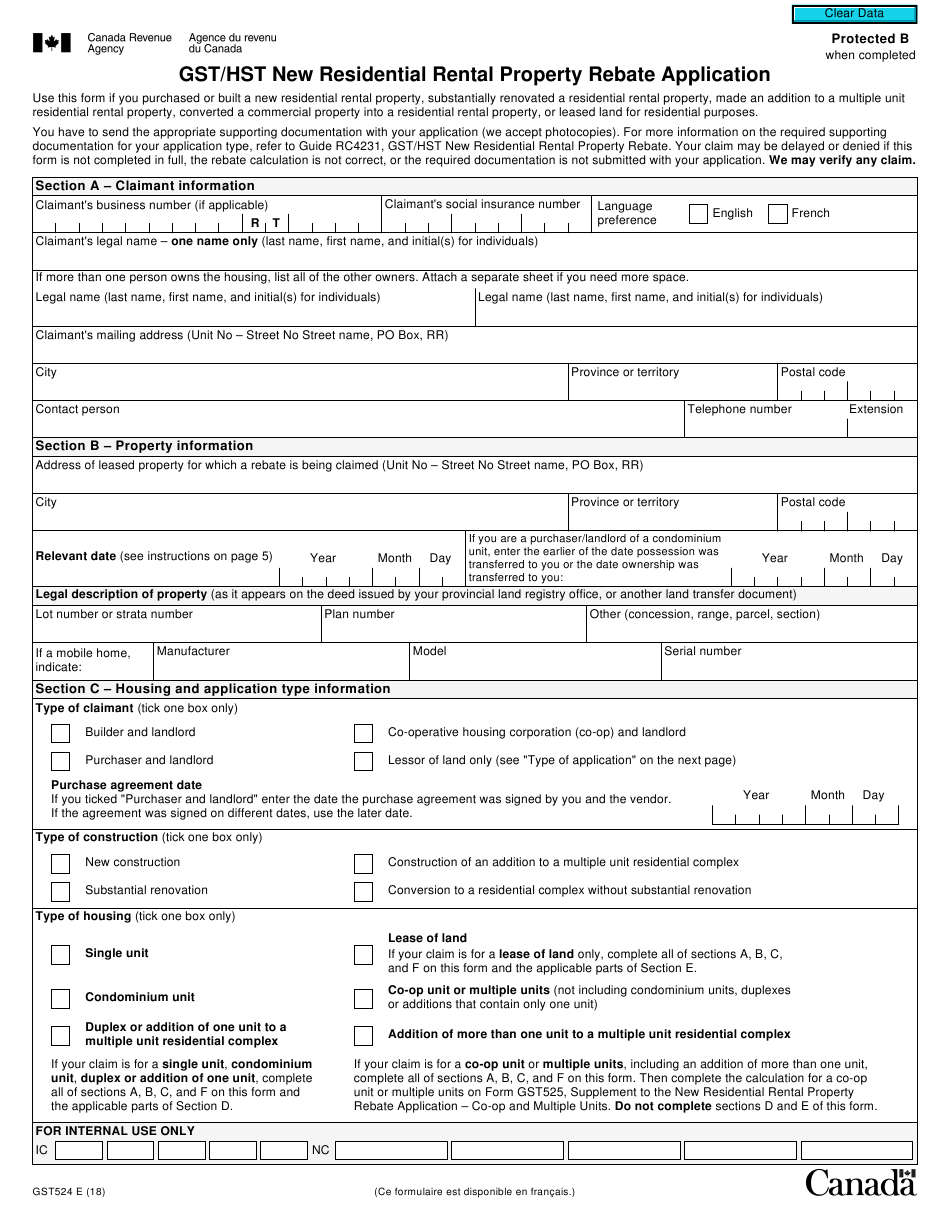Hst Rebate Form For Rental Property – A Property Rebate Form is an application for a tax refund that allows a taxpayer to avoid paying property taxes. The amount of property taxes due and the income of the owner will determine the rebate amount. Some states, such as Pennsylvania, offer additional incentives to lower property taxes. You can learn how to complete the form if you’re interested in applying to a property tax refund.
Income eligibility for a property tax rebate
If you’re trying to determine whether you qualify for a property tax rebate, you need to know what the income eligibility limits are for your property. Depending on the jurisdiction, there may be income cap requirements or thresholds. In Maryland, for instance, you can’t qualify for a rebate if your income is over a certain threshold. Some jurisdictions offer relief for renters with lower incomes, and they may consider a portion of your rent as property tax.
If you make less than $250,000 a year, you may qualify for a property tax rebate. You can expect to get a check of $300 to $400 if you fall within this category. The reduction will be greater if your income is more than this. However, if you have a loss of over $3,000, the amount will be added back into your income.
Participating in a program that reduces your property tax bill by four to five percent can be an option. The catch is that you may have to pay back the tax relief if you decide to sell your property. You can also choose to get $45,000 off the value of your property if you’re a veteran with a service-connected disability. However, this tax credit may only be valid for one year.
Methods for calculating a property-tax rebate
There are many ways to calculate your property-tax rebate. First, determine the property’s value. You can do this in many ways, depending on where you live. Add this number to the assessment rate. Each jurisdiction has a different one. This represents the percentage of your property value that is assessed for tax purposes. Let’s take, for example, $500,000 worth of property and an 8% assessment rate. Add the mill levy to your assessed value. This is the rate that represents the amount of taxes you owe the local government. In this case, the tax would be $1,800.
Generally, a property’s value is determined using the Unit Area Value System, which is an area-based tax valuation method. For instance, a city that uses the Unit Area Value System will calculate a property’s value based on its built-up area by calculating a per-unit price. This price is based on the expected return of a property in that city. This system is used in cities such as Delhi, Bengaluru and Hyderabad.
Pennsylvanians with disabilities and older citizens can access programs
For older and disabled Pennsylvanians who are in need of assistance, there are a number of government programs and services that can help. The Supplemental Nutrition Assistance program (SNAP), for example, provides food vouchers as well as government assistance for low-income people and those with disabilities. These benefits can be used to buy groceries and meet other basic needs. This government program is available to both individuals and their families.
The Pennsylvania Department of Aging administers these programs. They aim to protect the rights and welfare of older Pennsylvanians, promote healthy behaviors, prevent injury, and provide quality health care. PA 2-1-1 Northeast, a statewide program, is part of the national program. It provides support by phone, text, and web. NEPA Aging Network Alliance, (NANA), is an advocacy group that was established in 2013 to raise awareness about the needs of older people in Northeastern Pennsylvania. It does this through education, advocacy, coalition building, and networking.
Options Program is another program that provides assistance to older Pennsylvanians. This program, which is similar to the PA Older Americans Act provides services and assessments to eligible individuals. Eligibility requirements include being a Pennsylvania resident, being in financial hardship and being at least 60 years old. The Options Program also requires applicants to provide documentation of income and assets. This information is used for determining cost sharing and assistance sources.






